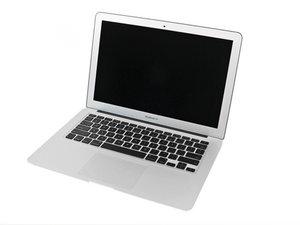You have two different Apple applications (Finder and Disk Utility) reporting two different data amounts. The likely cause is catalog/directory damage, not a damaged OS. Normally, the technique for replacing a damaged directory is to reformat the drive, but that erases all the data that's already there. Fortunately, when you format a drive, it constructs a new directory; if you then copy data off a drive with a damaged directory, the new directory is filled in with the relevant data as the copying operation progresses.
There are commercial utilities such as Disk Warrior and Drive Genius which can do directory repair while leaving the data more or less intact, but let's review the brute-force method.
You'll need an external drive to boot from, with an operating system late enough to start your computer and a copy of Disk Utility on it. If you've got a USB thumb drive, you can install a full copy of Mavericks on it. The thumb drive should be at least 16GB; bigger is better. You can then boot into the Recovery partition using the method you've used before, format the thumb drive using the steps outlined below, then install Mavericks on the thumb drive using the installer in the Utilities menu. Once you have a bootable thumb drive, you can boot from that drive using the same Option-key startup, and then selecting the thumb drive (give the drive a unique name, so it's easy to recognize).
The reason you have to have a separate drive to boot from is because the Recovery partition you're using is on the same physical drive as the damaged volume. Since you'll have to reformat the entire drive to eliminate the damage, you'll have to be booted from some other drive.
Since you don't have a recent backup, you'll also need an external hard drive capable of holding all the data on the internal drive. The internal drive is only 250GB, so that shouldn't cost much; most external drives these days are 500GB and up.
Once you've booted off the thumb drive, launch the copy of Disk Utility on the thumb drive (YourThumbDrive>Applications>Utilities>Disk Utility). You should see the thumb (boot) drive, the external salvage drive, and your internal SSD in the left-hand panel.
- Select the external hard drive
- Click "Partition"
- select "single partition" in the pulldown menu
- click "Options"
- select "GUID" (we want the external backup to be bootable)
This operation formats the external hard drive so that it will be a bootable drive for an Intel Mac, once the old data has been copied. Now the steps for copying the data to that drive:
- Click the button marked "First Aid"
- Click the button marked "Restore"
- select the internal volume (Macintosh HD or whatever)
- drag that drive into the Source field
- drag the volume for the external volume (the one on the external USB drive you just formatted) into the Destination field
- click "Restore"
What this is supposed to do is to copy all the data on the internal drive and clone it to the external drive. Don't be surprised if the copying takes a long time. If everything works properly, the external drive should then be bootable, and should take you back to where you were when the internal drive started acting up. Once the data is on the external drive, you should be able to get an accurate idea of how much data is actually there, since you've been getting contradictory reports from the internal drive. If you're really only using 102GB out of 250GB, then you don't need to do any data-tossing; but if it turns out that you really were close to 250GB, then you'll need to start looking for things to junk.
Once you have a copy on an external drive, you can then reformat the internal drive; that will repair the catalog. Then you reinstall Mavericks on the internal drive, and reboot off the internal. When you get to the point in the setup process where it asks if you want to restore from an external disk or Time Machine backup, you select the external hard drive. The Migration Assistant utility that takes over will transfer all the user accounts, applications, settings and customization over. When the computer completes the transfer, you should be back to where you were before the problems happened.
And the big lesson to take away from this is: Time Machine backups are easy to make. Turn Time Machine on, keep the Time Machine drive plugged in whenever the computer's sitting at a desk, and let it do its thing. It's a lot less hassle to have a recent backup than to have to recover from a disaster.

 8
8  30
30  6
6 
1 Comment
for help you better, remember to identify better your model first!
by lapo